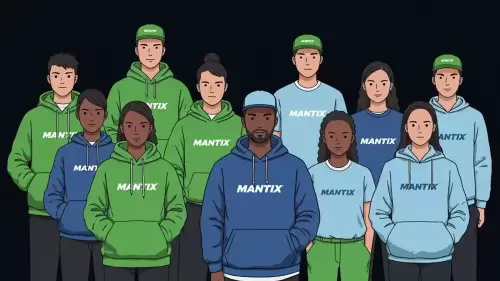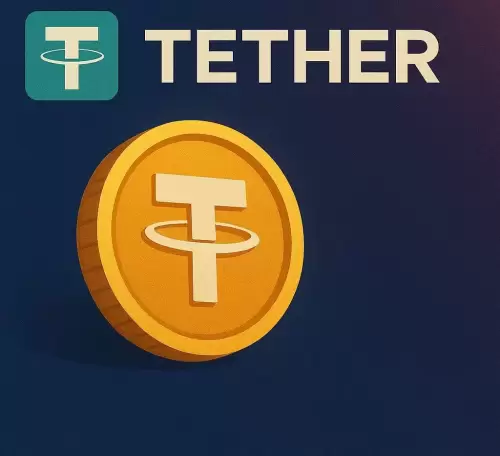 |
|
 |
|
 |
|
 |
|
 |
|
 |
|
 |
|
 |
|
 |
|
 |
|
 |
|
 |
|
 |
|
 |
|
 |
|
Bitcoin has taken the financial world by storm, captivating both seasoned investors and curious newcomers alike.
Bitcoin has taken the financial world by storm, captivating both seasoned investors and curious newcomers alike. With its decentralized nature and revolutionary technology, this digital currency offers a new way to think about money. Yet, one thing remains constant: the volatility of Bitcoin prices keeps everyone on their toes.
The question isn't just when BTC changes happen but why they occur in the first place. Understanding the factors that drive these fluctuations can help you navigate the thrilling yet turbulent waters of cryptocurrency investment.
Whether you’re looking to make your first move or are already deep into trading, being aware of what influences price changes can empower you as an investor. So let’s dive into the intriguing dance of Bitcoin's value and unravel what triggers those ups and downs along with some useful tips for staying ahead in this dynamic market.
Various factors contribute to BTC change, affecting its price point significantly. One major element is regulatory news.
Announcemts by governments can either instill confidence or create uncertainty among investors. For instance, if a country approves a Bitcoin ETF while another imposes a ban on cryptocurrency use, these events will have polarizing effects on market sentiment and, consequently, trading activity.
Market sentiment plays a crucial role in price movements. When traders feel optimistic, they may buy more, pushing demand up and ultimately affecting price changes. Conversely, fear can lead to panic selling, which contributes to sudden drops in value.
Technological advancements within the Bitcoin network also influence investor behavior. Network upgrades or security enhancements are viewed positively and might encourage more investment in BTC. Conversely, if there are concerns about network vulnerabilities or scams emerging, traders might become cautious and sell off some of their holdings.
Furthermore, macroeconomic trends can interfere with Bitcoin’s appeal as an alternative asset class. For example, during periods of high inflation or currency devaluation in traditional economies, more people tend to look toward cryptocurrencies as a hedge or store of value. This shift in attention and activity can affect the overall market valuation of Bitcoin.
Finally, media coverage plays a pivotal role in shaping public opinion and investor behavior. Positive headlines in mainstream media can drive interest in Bitcoin among a broader audience. This attention can lead to new investments and, in turn, price increases.
However, negative press or reports on setbacks within the cryptocurrency space have the opposite effect, impacting market dynamics and contributing to selling pressure.
In essence, the interplay of regulatory news, market sentiment, technological developments, macroeconomic trends, and media coverage creates a dynamic interplay that ultimately drives btc change over time.
Those who can identify and follow these trends closely are better equipped to navigate this exciting yet volatile market.
Supply and demand are fundamental forces that drive the price of any asset, and Bitcoin is no exception. When more people want to buy BTC than sell it, prices tend to rise. Conversely, if there are more sellers than buyers, prices usually fall.
Bitcoin has a fixed supply cap of 21 million coins. This scarcity is a factor that contributes significantly to its value. As interest in Bitcoin grows, especially during bullish market trends, demand for the limited coins available increases.
However, this limited supply can be a constraint, especially if bullish sentiment drives up demand quickly. For instance, if a major institution announces a large-scale Bitcoin investment or a country legalizes bitcoin casinos, we can expect to see a rapid influx of buyers in the market.
This high demand puts pressure on the limited coins available, pushing prices up as people compete to purchase BTC at progressively higher price points.
However, if there are more sellers than buyers—perhaps due to fear or a pessimistic market outlook—prices fall. For example, if there are rumors of a major cryptocurrency exchange being hacked or a government imposes stricter regulations on bitcoin trading platforms—leading to fear and uncertainty—we can expect to see sellers quickly emerging in the market.
Those who are pessimistic about the future of bitcoin might decide to sell their coins, hoping to cut losses or avoid further risk. Additionally, if a large holder—also known as a “whale”—sells a substantial portion of their bitcoin coins to diversify their portfolio or exit an investment, this action can have a significant impact on pricing.
The actions of "whales" create ripples in the market that affect overall volatility and investor behavior over time. Understanding these dynamics is essential for anyone looking to navigate btc change effectively.
Bitcoin's price journey has been anything but stable. Launched in 2009, it wasn't until late 2013 that its price rose to $1,000 for the first time. This dramatic increase was largely due to a perfect storm of events that drove up demand and limited supply.
In subsequent years, Bitcoin experienced several boom-and-bust cycles. The notorious bubble of late 2017 saw prices surging to nearly $20,000 as mainstream media attention and institutional interest fueled an incredible rally. However, this rally was followed by an 80% crash in early 2018 as the
Disclaimer:info@kdj.com
The information provided is not trading advice. kdj.com does not assume any responsibility for any investments made based on the information provided in this article. Cryptocurrencies are highly volatile and it is highly recommended that you invest with caution after thorough research!
If you believe that the content used on this website infringes your copyright, please contact us immediately (info@kdj.com) and we will delete it promptly.





























































